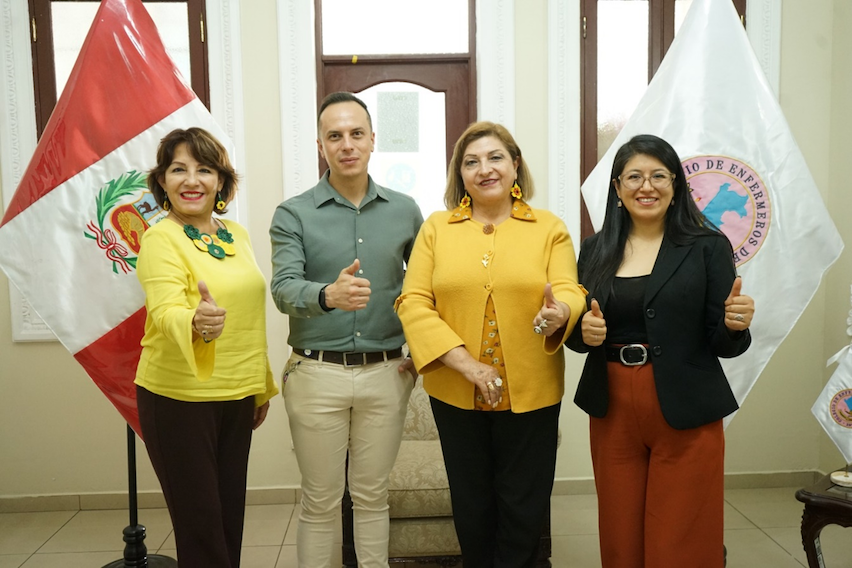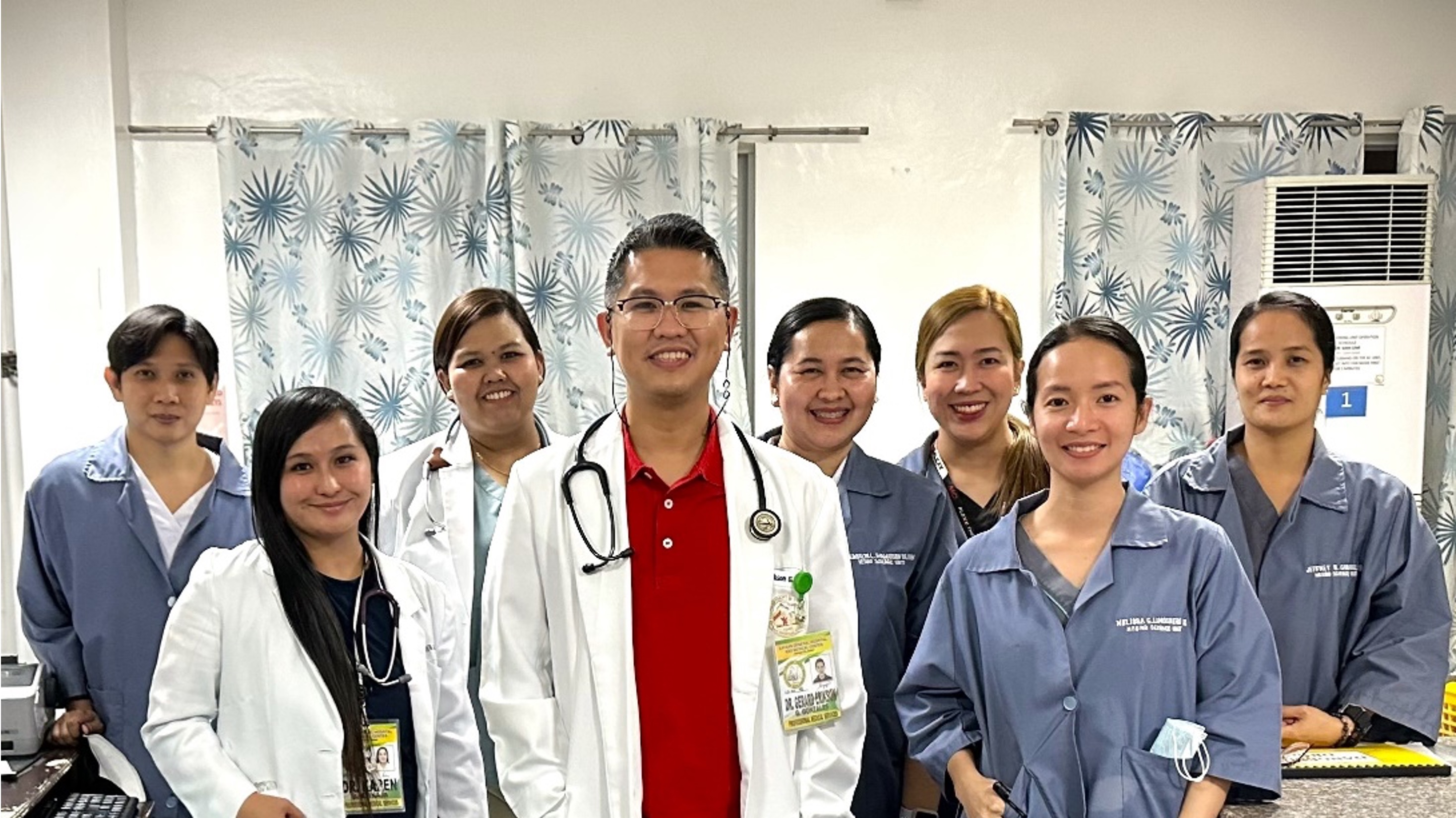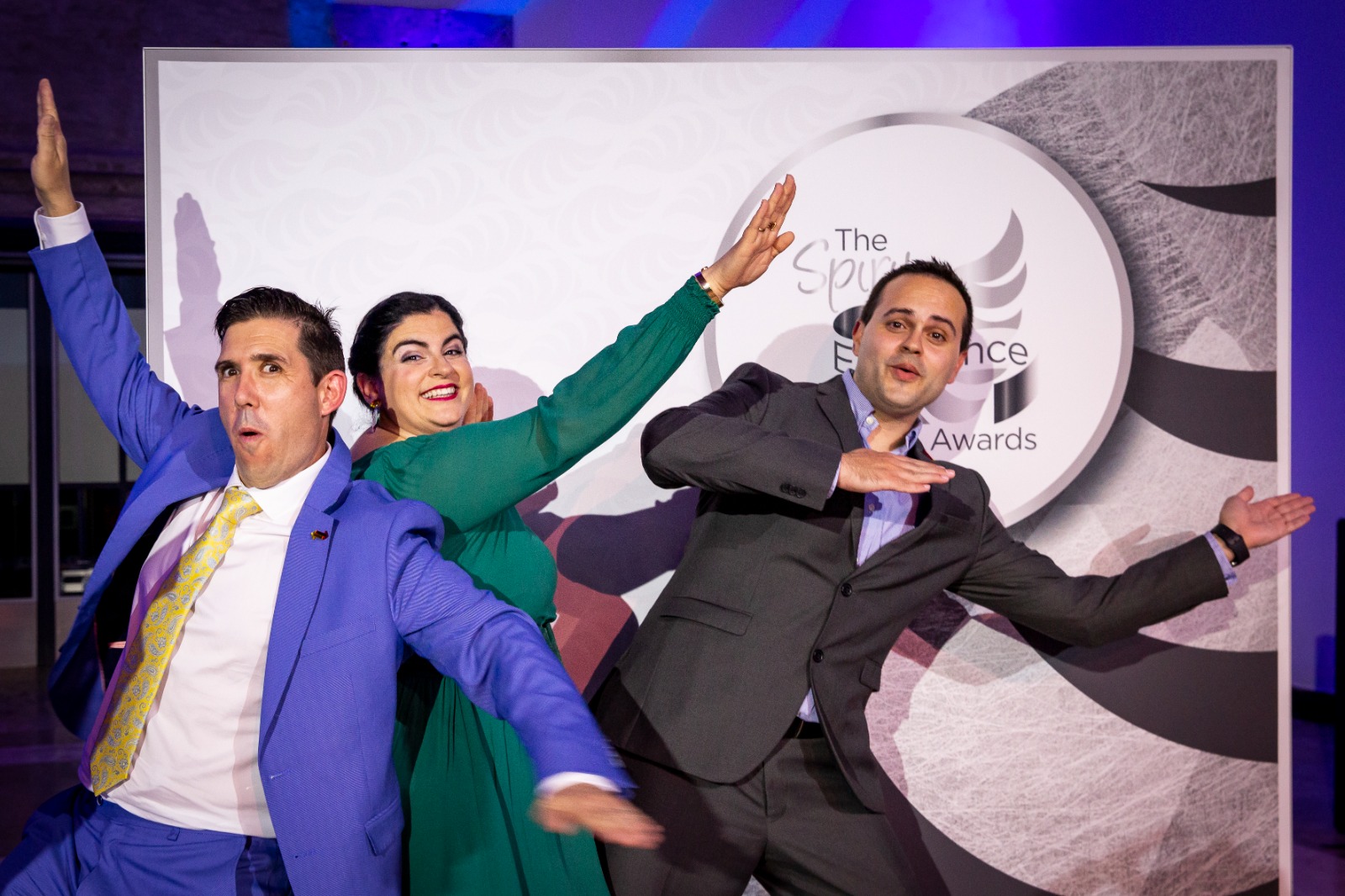
ไอทีเป็นความสุขที่หายากและเกือบจะไม่น่าแปลกใจที่จะได้พบกับคนที่มีความสุขกับชีวิตของพวกเขาอย่างสมบูรณ์ คนที่รักงานของพวกเขาจริงๆและรู้ว่าพวกเขาอยู่ที่ไหน
“ฉันเป็นผู้หญิงที่โชคดี” Almudena Fernández พยาบาลประสาทวิทยาผู้ซึ่งรวบรวมคํากล่าวอ้างของ Málaga ว่าเป็นเมืองที่มีความสุขที่สุดในโลกกล่าว ชีวิตของเธอกลายเป็นความสุขมากขึ้นตั้งแต่เธอกลายเป็นแม่ของสามคน เด็กชายสองคนอายุสี่ขวบและสองขวบ และโครงการอายุสามปีที่เรียกว่า Flecha ซึ่งเธออธิบายว่าเป็น “แอปเปิ้ลของดวงตาของฉัน”
เด็กคนที่สามคนนี้แสดงทุกสัญญาณของการเป็นเด็กเกินไป เริ่มจากการมอบหมายภายในให้กับระเบียบวิธีหน่วยโรคหลอดเลือดสมองการยกเครื่อง และตอนนี้พร้อมที่จะปฏิวัติการดูแลผู้ป่วยโรคหลอดเลือดสมองในโรงพยาบาลทั่วโลก
เป็นผลมาจากกระบวนการที่เริ่มต้นในปี 2018 เมื่อ Almudena และเพื่อนร่วมงานของเธอ Sergio González-Román และ Álvaro López ได้รับการคัดเลือกมา
โดยหัวหน้างานของ Luisa Vergara เพื่อทบทวนระเบียบวิธีและเส้นทางทางคลินิกในหน่วยโรคหลอดเลือดสมองที่ได้รับการตกแต่งใหม่ที่โรงพยาบาลมหาวิทยาลัยภูมิภาคมาลากา โปรโตคอลที่มีอยู่นั้นยาวและไม่ค่อยได้ใช้ นอกจากนี้ การปฏิบัติของโรงพยาบาลในการหมุนเวียนพยาบาลผ่านหน่วยโรคหลอดเลือดสมองและหอผู้ป่วยประสาทวิทยาได้ขยายความจําเป็นสําหรับชุดขั้นตอนที่ง่ายและเข้าถึงได้เพื่อระบุความต้องการของผู้ป่วยและส่งมอบการดูแลที่อิงหลักฐานอย่างสม่ําเสมอ
Luisa Vergara รู้ว่าเธอกําลังทําอะไรอยู่เมื่อเธอเลือกทีมของเธอ มีอัลมูเดนาที่มีความกระตือรือร้นในการแพร่เชื้อของเธอ ความหลงใหลในการกระจายความรู้ และความสามารถในความฝันที่ยิ่งใหญ่ Álvaro นักคิดเชิงตรรกะและปัญหาที่ค่อนข้างระมัดระวังพร้อมของขวัญสําหรับเทคโนโลยี และ Sergio ผู้นําทางธรรมชาติและออร์แกไนเซอร์ที่มีประสบการณ์ ที่มีความสามารถพยาบาลไอเดียเป็นจริง
นี่คือพลังพิเศษของพวกเขา Sergio สังเกตเกี่ยวกับความสามารถเฉพาะของสมาชิกในทีมแต่ละคน “อูลวาโรคือผู้วิเคราะห์ อัลมูเดนาคือหัวใจ” สิ่งที่พวกเขามีเหมือนกันคือแรงจูงใจที่เปลี่ยนงานให้เป็นภารกิจและภารกิจเป็น Proyecto Flecha
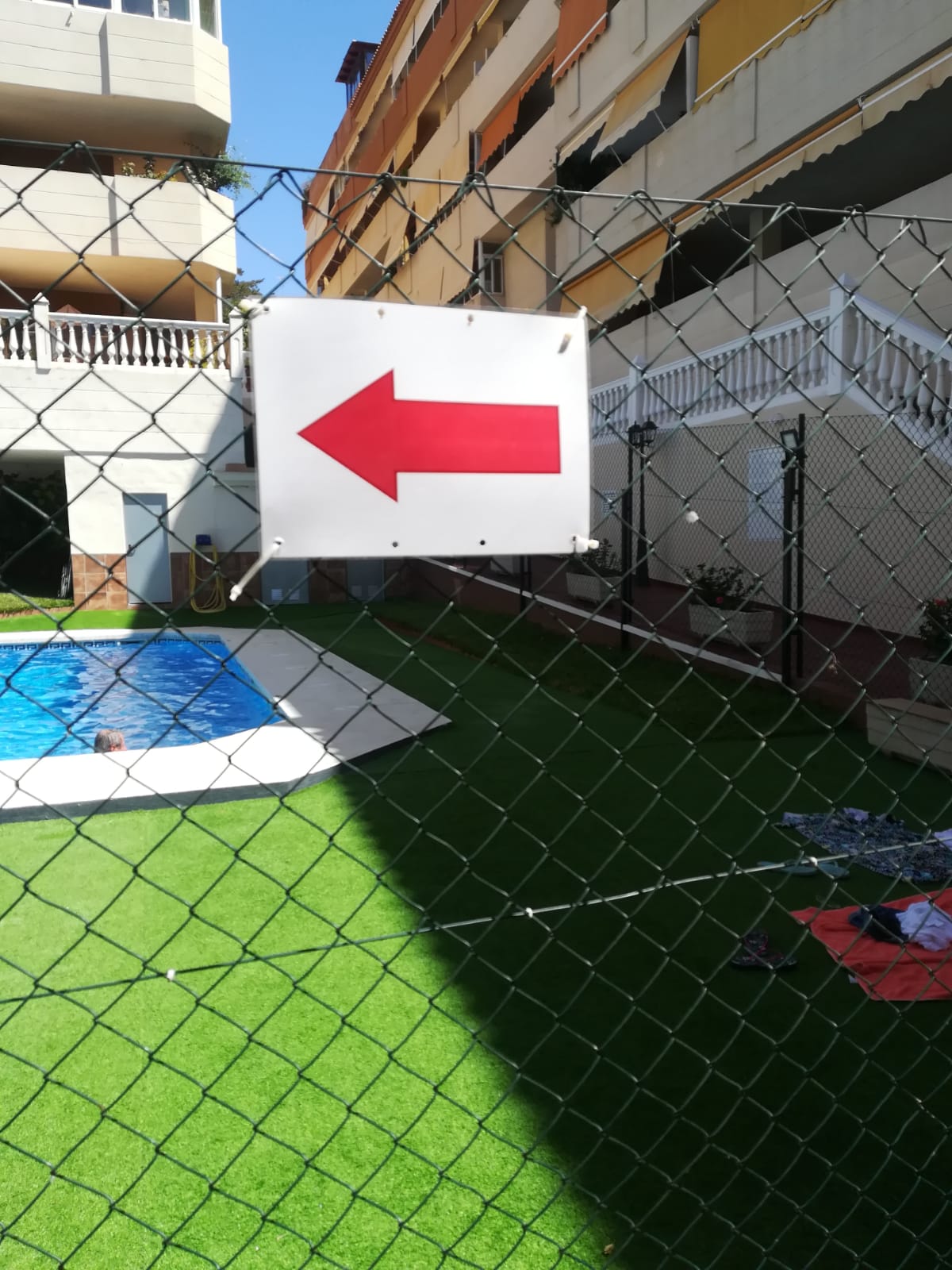
ลูกศรที่กําหนดเป้าหมายการฟื้นตัว
Proyecto Flecha สร้างมาตรฐานการดูแลหลังโรคหลอดเลือดสมองเฉียบพลันผ่านระบบลูกศรรหัสสีที่วางไว้ด้านบนสุดของเตียงของผู้ป่วยแต่ละรายเพื่อ
ช่วยให้แพทย์ พยาบาล และแม้แต่พนักงานยกกระเป๋าสามารถระบุประเภทของโรคหลอดเลือดสมองและด้านที่ได้รับผลกระทบได้อย่างง่ายดาย และผ่านรายละเอียดการเข้าถึงรหัส QR ของระเบียบวิธีการรักษาในแต่ละวัน เช่น การตรวจสอบภาวะกลืนลำบาก ภาวะน้ําตาลในเลือดสูง และอาการไข้เป็นประจํา
สัญญาณภาพแรกคือสีของลูกศร - สีแดงสําหรับโรคหลอดเลือดสมองชนิดเลือดออก สีเหลืองสําหรับโรคหลอดเลือดสมองชนิดสมองขาดเลือด สีเขียวสําหรับภาวะเลือดออกใต้เยื่ออะแร็กนอยด์ และสีน้ําเงินสําหรับขั้นตอนการถ่างขยายหลอดเลือดหลังจากโรคหลอดเลือดสมอง
สัญญาณที่สองคือทิศทางของลูกศรที่ระบุด้านที่ได้รับผลกระทบ ดังนั้นแม้แต่เจ้าหน้าที่ที่เพิ่งมาทํางานก็จะทราบได้ทันทีว่าด้านใดที่จะวางปลอกวัดความดันโลหิตและสายทางหลอดเลือดดำดํา ซึ่งจะติดเครื่องวัดออกซิเจนที่ปลายนิ้วเพื่อวัดระดับออกซิเจนในเลือด วิธีการเคลื่อนย้ายผู้ป่วย และด้านใดที่เหมาะสมที่สุดสําหรับผู้ป่วยที่มีความสามารถในการสื่อสารบกพร่อง
Sergio อธิบาย: “ลูกศรนี้ทําหน้าที่สําคัญหลายอย่าง ประการแรก ด้วยสีของมัน มันจะสามารถระบุประเภทของโรคหลอดเลือดสมองที่กําลังได้รับการรักษาได้ ทิศทางของมันบ่งชี้พื้นที่ที่ได้รับผลกระทบ ตั้งแต่จุดเริ่มต้นของโรคหลอดเลือดสมองในสมองไปจนถึงผลที่ตามมาทางกายภาพที่ผู้ป่วยอาจมี โดยเป็นแนวทางในการดูแลที่จะดําเนินการบนพื้นฐานของความบกพร่องของผู้ป่วย ซึ่งครอบคลุมด้านต่าง ๆ เช่น โภชนาการ การเคลื่อนไหว และการสื่อสาร สุดท้าย โครงการจะสนับสนุนการฟื้นฟูตั้งแต่เนิ่น ๆ เพื่อให้การสนับสนุนทั้งแก่บุคลากรทางการแพทย์และครอบครัว”
ซูเปอร์ฮีโร่ของ Luisa Vergara ไม่ได้คิดถึงลูกศรในวันแรก พวกเขาใช้เวลามากในการพูดและฟังเพื่อแสวงหาโมเดลที่เรียบง่ายและใช้งานได้จริงเพื่อปรับปรุงและสร้างมาตรฐานการดูแล จากนั้นในเย็นวันหนึ่งหลังเลิกงาน Sergio ไปว่ายน้ําในสระว่ายน้ําในอาคารอพาร์ทเมนท์ของเขาที่มีลูกศรสีแดงระบุตําแหน่งของห้องเปลี่ยนเสื้อผ้าที่ตาของเขาเห็น เขาถ่ายภาพและแชร์กับ Almudena และ Álvaro ในกลุ่ม WhatsApp ของพวกเขา จากนั้นซูเปอร์ฮีโร่ก็ไปทํางาน
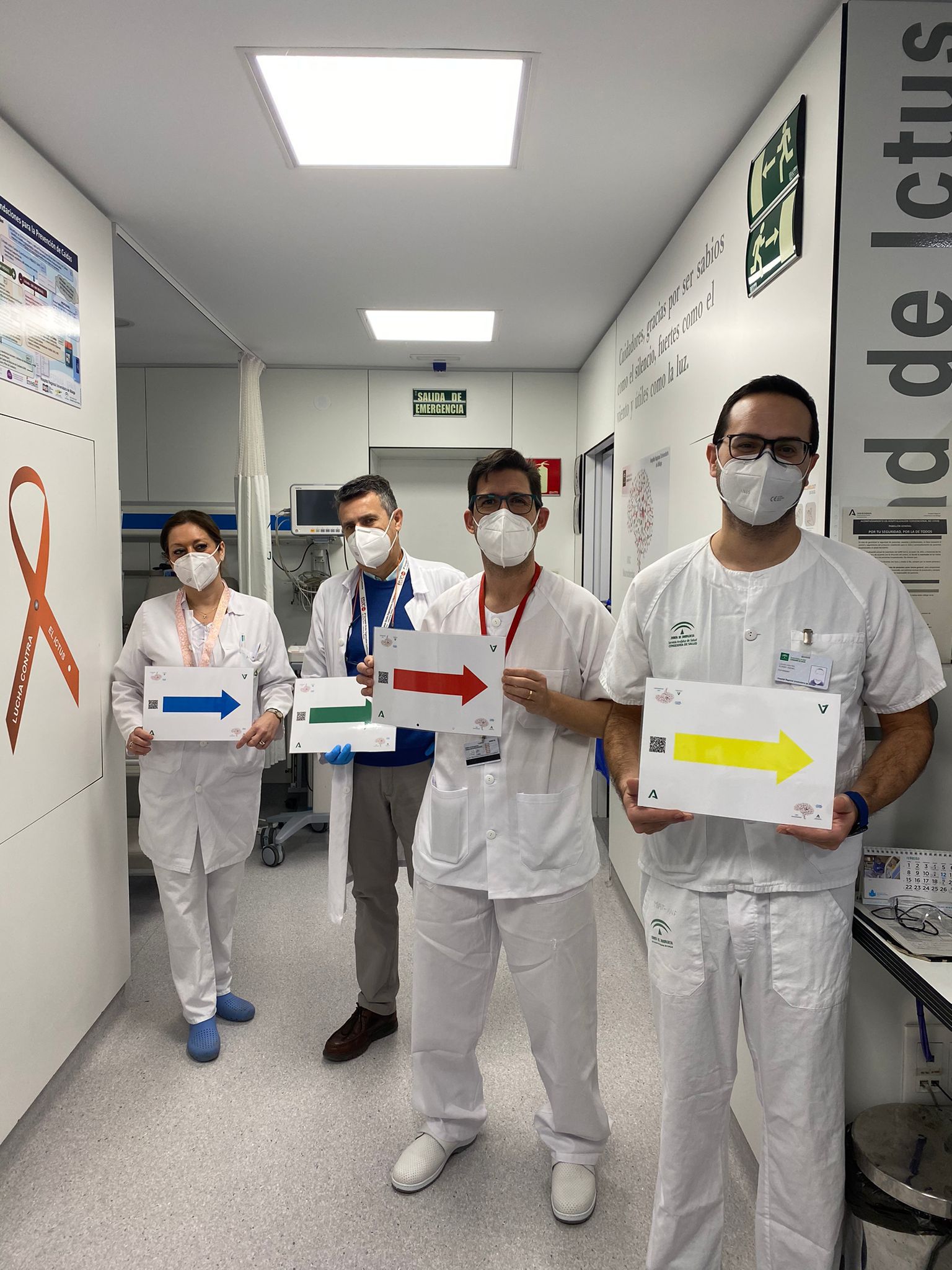
งานนี้เป็นงานที่ดีที่สุดในโลก
Sergio เติบโตมาพร้อมกับความสนใจในการดูแลสุขภาพ และบันทึกทางวิชาการของเขาแนะนําว่าเขาตั้งใจจะเป็นแพทย์ อย่างไรก็ตาม เขาตระหนักว่าเขาต้องการทํางานร่วมกับผู้ป่วยโดยตรง และเซสชั่นภาคปฏิบัติครั้งแรกของเขาในโรงเรียนพยาบาลได้ขจัดข้อสงสัยทั้งหมด: “ฉันเข้าใจว่าฉันเป็นพยาบาล”
นอกจากนี้ เขายังต้องการสํารวจโลกภายนอกสเปนและมีความเข้าใจในความเป็นจริงที่แตกต่างกัน ดังนั้นหลังจากจบการศึกษาเขาทํางานในอิตาลีในฐานะพยาบาลผู้ปลูกถ่าย จากนั้น การเข้าร่วมกับองค์กรด้านมนุษยธรรมระหว่างประเทศจะแนะนําเขาให้รู้จักกับโลกที่กําลังพัฒนา และภรรยาในอนาคตของเขา Pilar กําลังจะย้ายไปที่ Chad ในแอฟริกากลางเป็นเวลาสี่ปีเพื่อทํางานในโครงการสําหรับเด็กไร้บ้าน Sergio เข้าร่วมกับเธอด้วยความเชื่อที่ผิดพลาดว่ามันอาจชักจูงให้เธอกลับมาเร็วกว่านี้
เมื่อพวกเขากลับมาที่สเปนในที่สุดเขาก็ได้ทําสัญญาชั่วคราวในฐานะพยาบาลประสาทวิทยาและพบซอกของเขา
การพยาบาลโรคหลอดเลือดสมองช่วยให้เขาทํางานอย่างใกล้ชิดกับผู้ป่วยและครอบครัว โดยให้การดูแลพยาบาลเฉพาะที่มีอิทธิพลต่อผลลัพธ์ เขากล่าว “ผู้ป่วยเหล่านี้เปราะบาง ชีวิตของพวกเขาเปลี่ยนไป มีความรับผิดชอบมหาศาลในการช่วยให้พวกเขามีชีวิตที่ดีที่สุดเท่าที่จะเป็นไปได้”
Álvaro จะเป็นช่างยนต์ แต่เปลี่ยนใจในนาทีสุดท้าย “ฉันตัดสินใจที่จะพยายาม ‘แก้ไข’ คนแทนที่จะเป็นรถยนต์ ตั้งแต่ปี 2007 ฉันได้ทํางานในบริการต่าง ๆ มากมาย แต่ตั้งแต่ปี 2016 เป็นต้นไป เมื่อฉันเริ่มต้นจากประสาทวิทยา ฉันอยู่ในสิ่งที่ฉันคิดว่าครอบครัวของฉันทํางาน ฉันมีเพื่อนร่วมงานที่ยอดเยี่ยมและรู้สึกขอบคุณ Luisa ซึ่งเป็นหัวหน้างานของฉันที่ทําสัญญาหลังจากทําสัญญา ทําให้ฉันอยู่เคียงข้างเธอเพราะเธอเห็นศักยภาพในตัวฉัน เนื่องจากโอกาสที่เธอมอบให้ฉัน ฉันจึงสามารถพัฒนาการดูแลโรคหลอดเลือดสมองในระดับที่ดีได้”
ความรู้เรื่องโรคหลอดเลือดสมองของเขาที่ลึกซึ้งยิ่งขึ้นจากการวิจัยในขณะที่พัฒนา Proyecto Flecha สร้างความแตกต่างเมื่อพ่อของเขาเพิ่งประสบกับโรคหลอดเลือดสมองตีบที่ซับซ้อนและกว้างขวาง โรคหลอดเลือดสมองประเภทนี้มักมีอาการที่คลุมเครือ แต่จากการติดต่อทางโทรศัพท์ Álvaro สามารถตรวจจับความเป็นไปได้ของโรคหลอดเลือดสมองและแจ้งเตือนนักประสาทวิทยาที่กําลังปฏิบัติหน้าที่ได้
เช่นเดียวกับเพื่อนร่วมงานสองคนของเธอ Almudena ได้ "พบผู้ป่วยของเธอ" เมื่อเธอได้รับมอบหมายให้ดูแลแผนกประสาทวิทยาและหน่วยโรคหลอดเลือดสมองหลังจากทํางานมาหลายปี
"งานนี้ดีที่สุดในโลก" เธอกล่าว “มันเป็นมนุษย์ มันเป็นวิทยาศาสตร์ คุณได้เรียนรู้มากมายทุกวัน ทุกคนแตกต่างกัน ซึ่งอาจเป็นพยาธิวิทยาเดียวกันแต่เป็นผู้ป่วยที่แตกต่างกัน มันสอนคุณเกี่ยวกับชีวิต”
ด้วยการรักษาโดยการเปิดหลอดเลือดที่อุดตัน หน่วยโรคหลอดเลือดสมองได้กลายเป็นสถานที่ที่เกิดปาฏิหาริย์ เธอกล่าว การหมุนเวียนระหว่างผู้ป่วยในหอผู้ป่วยหมายถึงผู้ป่วยซึ่งป่วยหนักเมื่อรับตัวเข้ารักษาตัว อาจลุกขึ้นยืนและกําลังจะกลับมาที่กะของคุณในหน่วยโรคหลอดเลือดสมองในอีกสองวันต่อมา “มันวิเศษสําหรับฉัน” Almudena กล่าว “นี่คือเหตุผลที่ฉันรักมัน”
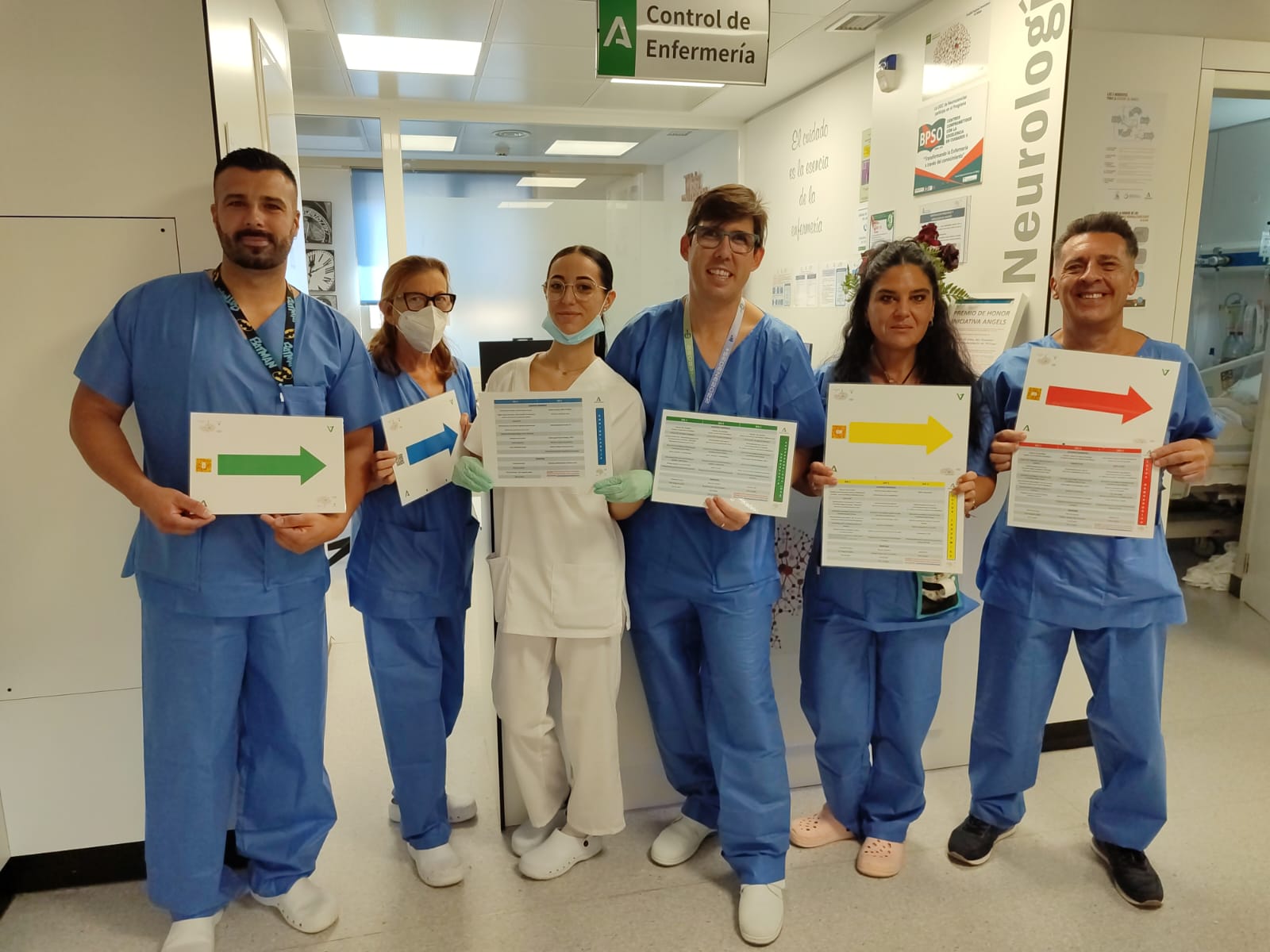
ลูกศรจะขึ้นบิน
ประมาณหนึ่งปีหลังจากที่ Sergio ได้ว่ายน้ําอย่างสงบ ทีม Proyecto Flecha ได้นําเสนอแนวคิดของพวกเขาต่อทีมสหสาขาวิชาชีพที่โรงพยาบาลมหาวิทยาลัยภูมิภาคมาลากา “ผู้คนมีความสุข พวกเขาชอบมัน พวกเขาคิดว่ามันเป็นความคิดที่ดี” Sergio กล่าว ความคิดเห็นและคําแนะนําจากนักประสาทวิทยา นักกายภาพบําบัด และนักบําบัดการพูดเพิ่มมูลค่าและเป็นเหตุผล Sergio กล่าวว่าทําไม Proyecto Flecha จึง “สมบูรณ์” เมื่อเปิดตัวอย่างเป็นทางการในปี 2020
มีหลายอย่างเกิดขึ้นในช่วงสามปีนับจากนั้น
Sergio เป็นสมาชิกผู้ก่อตั้งคณะกรรมการทิศทางพยาบาลของ Andalusian ซึ่ง Alicia Arjona ที่ปรึกษา Angels ได้จัดตั้งขึ้นโดยมีเป้าหมายเพื่อสร้างมาตรฐานการดูแลรักษาพยาบาลโรคหลอดเลือดสมองในภูมิภาค เขายังได้รับบทบาทเชิงกลยุทธ์ใน SEDENE สมาคมพยาบาลประสาทวิทยาแห่งสเปน
ลูกศรมีชื่อเสียงในด้านสัญลักษณ์การเจริญพันธุ์ เมื่อสมาชิกทุกคนในทีม Proyecto Flecha มีลูกคนที่สอง แม้ว่าจะมีหน้าที่ในการดูแลเด็กที่บ้านมากขึ้น แต่ทีม Proyecto Flecha ได้ร่วมมือกับ University of Málaga และ Málaga Biomedical Research Insitute (IBIMA) เพื่อขอรับการตรวจสอบความถูกต้องของโครงการผ่านการศึกษาวิจัย FLECHA-IMPACT
ในเดือนพฤษภาคม 2023 ทั้งสามคนได้รับการฉลองในมิวนิก ซึ่งการเสนอชื่อเพื่อรับรางวัลจิตวิญญาณแห่งความเป็นเลิศของ ESO ได้ยกย่องผลงานที่โดดเด่นของพวกเขาในการเพิ่มมาตรฐานการดูแลผู้ป่วยโรคหลอดเลือดสมอง
แต่ที่สําคัญที่สุด Proyecto Flecha เริ่มแพร่กระจายไปยังโรงพยาบาลนอกมาลากา มันเดินทางได้ดี อย่างที่ Sergio อธิบายไว้ โครงการนี้ "มีการเคลื่อนไหวอย่างสม่ําเสมอ ได้รับการเสริมด้วยผลงานของผู้เชี่ยวชาญคนอื่น ๆ ในโรงพยาบาลต่าง ๆ หลังจากการดําเนินงาน" ในเดือนตุลาคม 2023 มีลูกศรชี้ไปที่การรักษาที่ดีขึ้นในหน่วยโรคหลอดเลือดสมองของโรงพยาบาลอีกห้าแห่งในอันดาลูเซียและมาดริด โดยเริ่มดําเนินการที่อีก 13 แห่ง
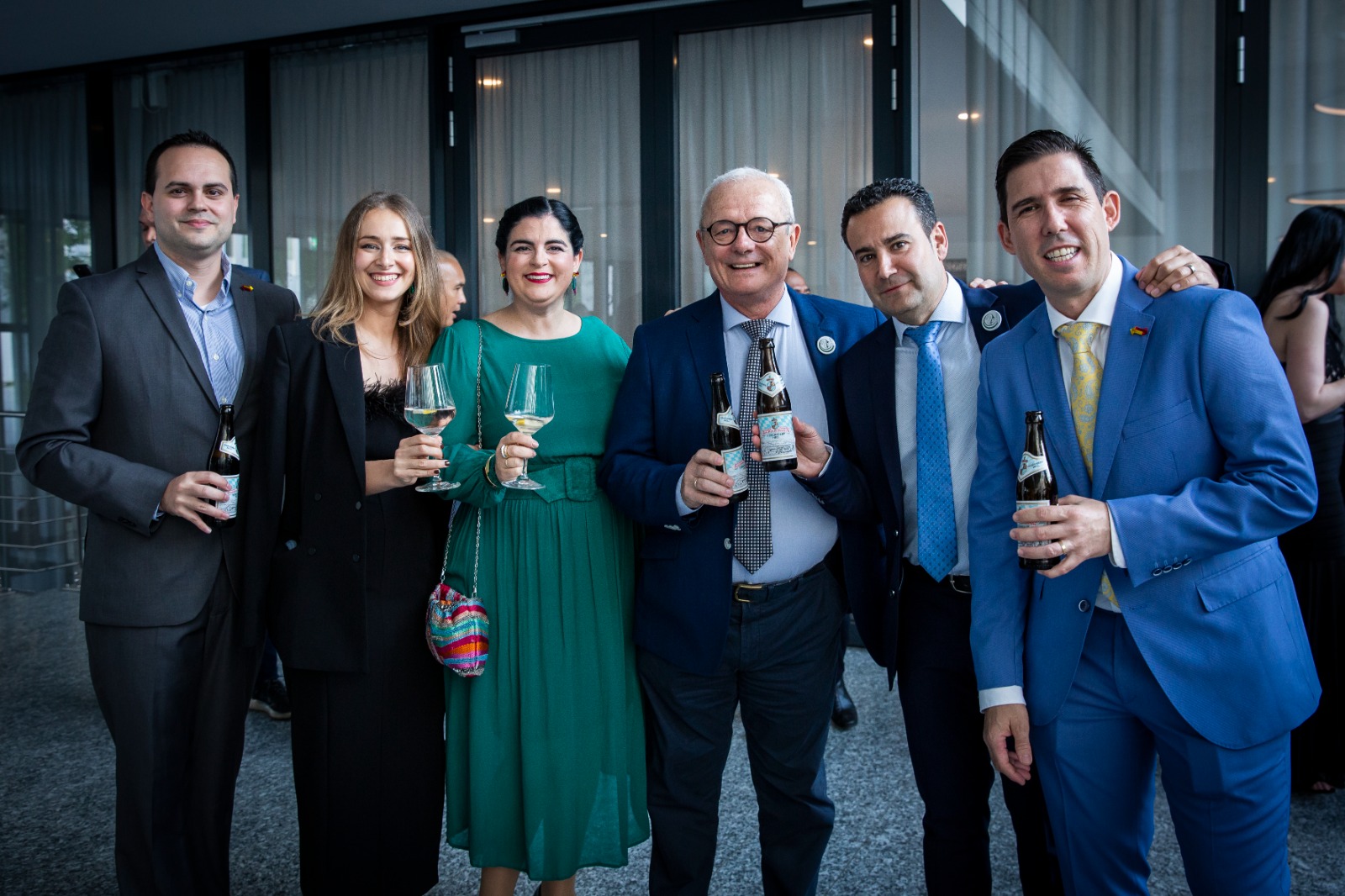
คุณรู้สึกภาคภูมิใจอย่างยิ่ง
แต่วิถีของลูกศรยังไม่เสร็จสมบูรณ์ เนื่องจาก Angels Initiative กําลังอยู่ระหว่างการปรับรูปแบบที่จะเปิดตัวในโรงพยาบาลทั่วโลก
เขาชอบการแทรกแซงที่ทําให้ไม่สามารถทําสิ่งที่ผิดได้ Jan van der Merwe หัวหน้าโครงการระดับโลกของ Angels กล่าว “โครงการลูกศรอยู่ในหมวดหมู่เดียวกับถุงโรคหลอดเลือดสมอง Angels และการทดสอบ ณ จุดดูแลผู้ป่วย หากคุณใช้ในแบบที่ควรจะเป็น คุณก็ไม่สามารถทําผิดพลาดได้”
Proyecto Flecha มีคุณค่าอย่างยิ่งในสถานการณ์ที่ผู้ป่วยไม่ได้รับการรักษาในหน่วยโรคหลอดเลือดสมองโดยเฉพาะ Jan กล่าว “ผู้ป่วยในหน่วยโรคหลอดเลือดสมองมีโอกาสที่ดีที่จะได้รับการรักษาตามแนวทาง แต่สําหรับผู้ป่วยโรคหลอดเลือดสมองในหอผู้ป่วยประสาทวิทยาหรือหอผู้ป่วยไอซียู หรือไม่ว่าจะมีบุคคลต่าง ๆ มากมายที่เกี่ยวข้องในการดูแลของพวกเขา ลูกศรจะกลายเป็นสิ่งที่ ‘เล็ก’ ที่สร้างความแตกต่างที่ยิ่งใหญ่ ช่วยชีวิตได้”
Almudena กล่าวว่า ความคิดของทีมพยาบาลขนาดเล็กของพวกเขาที่มีผลกระทบอย่างมากนี้ทําให้เธอตกหลุมรัก “ทุกสิ่งรอบตัว Proyecto Flecha นั้นน่าทึ่งมาก ทุกคนมีความสุขกับมันและคุณรู้สึกภูมิใจอย่างยิ่ง”
เขาไม่เคยจินตนาการว่าจะมีสิ่งที่ยอดเยี่ยมเกิดขึ้นมากมาย Álvaro กล่าว โครงการเริ่มต้นเพียงพอ “เรามีเป้าหมายร่วมกันคือการปรับปรุงการดูแลผู้ป่วยโรคหลอดเลือดสมอง อํานวยความสะดวกในการเข้าถึงข้อมูล และหลีกเลี่ยงภาวะแทรกซ้อนโดยนําปัญหามาใส่ใจล่วงหน้า ฉันคิดว่าฉันยังไม่เข้าใจขนาดของมันทั้งหมดและการเปลี่ยนแปลงที่เกิดขึ้นในชีวิตของผู้คนมากมายทั่วโลก”
สําหรับคนที่ชอบ "ทํางานในเงา" ความสนใจและการยกย่องจําเป็นต้องมีการปรับเปลี่ยนบางอย่าง “ตั้งแต่เราเริ่มทํางานกับ Alicia และ Angels Initiative ฉันรู้สึกท่วมท้นในทางที่ดี” เขากล่าว
การวิพากษ์วิจารณ์เพียงอย่างเดียวที่โครงการได้รับมาจนถึงขณะนี้มาจากนักประสาทวิทยาที่อ้างถึงแผนปฏิบัติการโรคหลอดเลือดสมองสําหรับยุโรป (SAPE) ซึ่งมีวัตถุประสงค์รวมถึงการรักษาผู้ป่วยโรคหลอดเลือดสมอง 90 เปอร์เซ็นต์ในหน่วยโรคหลอดเลือดสมองโดยเฉพาะภายในปี 2030 ด้วยการแนะนําการรักษาโรคหลอดเลือดสมองที่เป็นมาตรฐานในยาภายในและหอผู้ป่วยทั่วไป โครงการลูกศรมีความเสี่ยงที่จะบ่อนทําลายเป้าหมายนี้โดยการทําให้หน่วยโรคหลอดเลือดสมองมากขึ้นดูล้าสมัย นักประสาทวิทยาแนะนํา
แต่ข้อโต้แย้งนี้เป็นเพียงการเน้นย้ําถึงความสําคัญของการจัดเข้ามาตรฐานเท่านั้น Sergio เชื่อว่า ในที่สุดหน่วยโรคหลอดเลือดสมองจะขยายการรักษาที่เป็นมาตรฐานทั่วทั้งยุโรป แต่ผู้ป่วยที่เป็นโรคหลอดเลือดสมองในวันนี้หรือพรุ่งนี้ไม่สามารถรอได้อีกเจ็ดปี ผู้ป่วยเหล่านี้อาจเป็นหนี้ชีวิตของพวกเขาต่อลูกศรที่มุ่งเป้าไปที่การฟื้นตัวของพวกเขา


